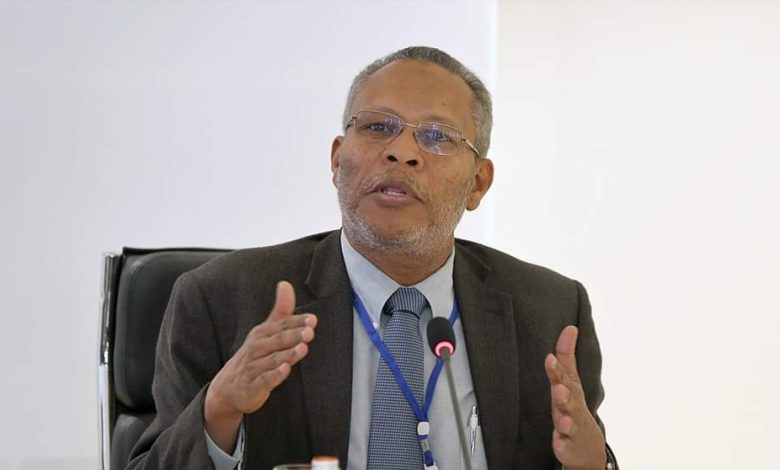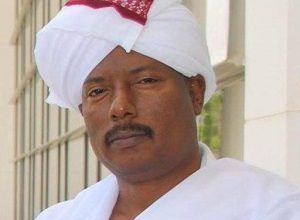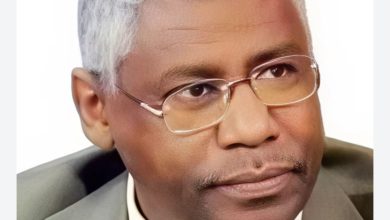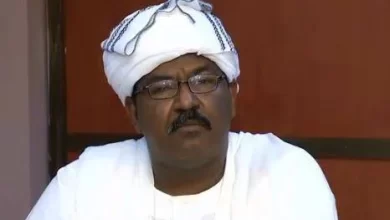An Unstable Transitional Period: The Transformations of the Hybrid Coalition in Sudan (4-6)

By: Hassan Elhag Ali Ahmad
Third: Political alliances in light of the Juba Peace Agreement
The Juba Peace Agreement, which was signed on October 3, 2020, brought about an important shift in the map of political balances. It brought new actors into the government, namely the armed movements that signed the peace agreement. Among the institutions emerging from the Juba Peace Agreement is the “Council of Partners (COP).” Its composition was not mentioned in the constitutional document, but was formed by a decision of the President of the Sovereign Council on November 30, 2020. The Council consists of 29 members representing the Sovereignty Council, Forces of Freedom and Change (FFC) Council, the Council of Ministers, and the Revolutionary Front that signed the Juba Peace Agreement.
The Council was criticized by the Council of Ministers regarding its powers, as well as by political forces and members of the Sovereign Council. Aisha Al-Saeed, a member of the Sovereign Council, sharply criticized the way it was approved, and saw it as a coup against the state apparatus and its known structures.
For these and other reasons, and although the composition of the Partbers Council was inclusive of civilians, military personnel, and armed movements, this alliance did not last long. The Sudanese Congress Party issued a press statement in which it announced the withdrawal of its president from membership in the Council of Partners , and demanded that the Minister of Defense and Interior, the Public Prosecutor, and the Governor be held accountable for the incident of shooting at participants on the anniversary of the dispersal of the Army General Command sit-in. Within a year, after the formation of the Partners Council, the interests of its constituent groups diverged and their political positions conflicted. This discrepancy led to a state of anxiety among members of an alliance that was more hybrid than its predecessor. This situation has led to an important operation of the mechanism of convening sub-alliances.
1. Sub-alliances: fragmentation of organizations and branching out of hybridization
Due to the general fragmentation in political life, parties tend to form different alliances. With a large coalition forming an umbrella alliance, this type of loose alliance does not survive in the presence of internal disparity, especially in a contentious politics characterized by constant transformation. Therefore, concluding sub-alliances would strengthen the negotiating power of small organizations, and they also form a nucleus upon which to build in the event of the collapse of a loose civil alliance contract, such as the umbrella alliance, and to prepare for the next minimum alliance.
We have two types of sub-alliances in the Sudanese case we are studying. The first was to work on establishing an “alliance between armed forces,” which is what the head of the government delegation in the Juba peace negotiations, Lieutenant General Mohamed Hamdan Dagalo (Hemedti), sought. He secretly asked the negotiating armed movements to establish an alliance against the “Jalabah.” Representatives of the armed movements informed the United Nations Group of Experts on Sudanese Affairs of this offer. The second example is the attempt to form a sub-alliance, such as the one concluded between the Sudan Liberation Forces, the Sudan Liberation Movement/Army (SPLM/SPLA), , the Sudanese Alliance, and the Sudanese Congress Party on January 12, 2021. The Sudanese Congress Party, in the signing ceremony of the document of understanding between the aforementioned organizations, said that this document speaks about joint cooperation between these political forces and working to achieve the goals of the revolution as well as working to implement the provisions of the Juba Agreement. Despite this declaration, this sub-alliance was also hybrid.
A few months after the Juba Peace Agreement, tension emerged between the three components of the coalition of civilians, the military, and the armed movements. This first emerged in the statements of General Hemedti, in which he attacked parties in the civilian component. He said at a graduation ceremony for a group of his forces: “The country is collapsed politically, security-wise, and socially […] We said our words, they targeted us and ostracized us when we told them we would not allow chaos.” Since the formation of the Council of Partners, a state of tension has also been created between some armed movements and the civilian component represented by the Central Council for FFC. Some armed movements accused the political incubator of Prime Minister Abdullah Hamdouk of obstructing the implementation of the Juba Peace Agreement, and also obstructing the establishment of the regional regime in Darfur.
In an attempt to remedy the discrepancy and give new momentum to the FFC Alliance – Central Council (i.e. what remains of the Civil Umbrella Coalition) and expand it and to reproduce and expand the FFC Alliance as well, the Political Declaration to Unify the FFC, which was signed on September 8, 2021, by 37 movements, groups and parties in Khartoum. The Justice and Equality Movement (JEM), the Sudan Liberation Movement/Army SLM/A, Minni Arko Minawi’s wing, and the Communist Party were absent from the signing. The most prominent thing contained in the statement is the announcement of new mechanisms to unify the FFCforces, such as the establishment of the General Conference, the General Assembly, the Central Council, and the Executive Office, not involving the regular forces and distancing them from political conflicts, and working with the military component to reach a complete democratic civil transformation.
In the midst of the country’s rapidly moving contentious politics, the government announced a failed coup attempt — which other political forces saw as a rebellion — on September 21, 2021. The announcement of this move accelerated the fracturing of the relationship between the military and civilians. The accusations of negligence by the President of the Sovereign Council against the civil component came out publicly. On the civilian side, a member of the Sovereign Council, Mohammad Al-Faki Suleiman, stated in an interview with state television, on September 24, 2021, that “the debates taking place in the political arena between the military and political components aim to change the political equation by the military, indicating that what was stated by the President of the Sovereign Council and his deputy in this regard is more dangerous than the failed coup attempt itself.”
Another crack in the hybrid alliance also emerged, when the rift between some of the armed movements that signed the Juba peace agreement and the Central Council of FFC grew apart. Dissidents from the Freedom and Change Alliance announced a new charter called the “National Charter for the Unity of Freedom and Change.” They attributed the split to political marginalization and the monopoly of power by a specific group of parties. The governor of the Darfur region, Minawi, believes that the charter provides a long-term vision. He stated that the people have been paying the price of monopoly and have tasted bitterness for 30 years, and that they are tasting bitterness for two years now. The charter included general principles that no political force could reject, in order to preserve the minimum agreement and use the method of addressing many actors at the same time, such as talking about adhering to the unity of the nation’s territory, establishing a state of justice and social welfare, establishing a federal system, and a smooth and safe transition for democracy. However, the Central Council for FFC considered that the aim of the declaration was to create a legal and constitutional crisis over who represents the FFC.
In an attempt to alleviate the tension between civilians and the military, General Al-Burhan met with Prime Minister Hamdouk , on September 27, 2021, for a second time. The military component stipulated the removal of Mohammad Al-Faki Suleiman from the membership of the Sovereign Council in order to complete reconciliation with the civilian component.
2. Dissolution of the hybrid alliance and establishment of a de facto alliance
The hybrid coalition collapsed, after tension between civilians and the military escalated and reached its maximum extent on October 25, 2021, when General Al-Burhan announced the imposition of a state of emergency throughout the country, dissolving the Transitional Sovereign Council and the Council of Ministers, and adhering to what was stated in the constitutional document with suspending some of its articles, adhering to the Juba Peace Agreement, ending the assignment of state governors, relieving undersecretaries from their duties, assigning general directors to conduct work in the ministries, and freezing the work of the Empowerment Removal Committee until its work method and formation are reviewed. Al-Burhan’s speeches reflected his use of a means of addressing different actors at the same time. It targeted the armed movements that signed the Juba Agreement, and also secured the position of the military component on both sides, in addition to the forces interested in completing the transitional period. However, Al-Burhan’s decisions were rejected by political forces, including the Central Council of FFC, the Communist Party, and resistance committees, and they considered these decisions a coup against the constitutional situation, which effectively ended the hybrid coalition.
In this context, another alliance was born between the military component, the armed movements that signed the Juba Peace Agreement, and a group of technocrats. The focus of the military component was on managing the government work, while the other part of the coalition, the armed movements that signed the Juba Peace Agreement, focused on working to implement this agreement. Its members held various government positions, from the Sovereign Council to governors of states. A de facto government was formed, staffed by ministers from Hamdouk’s government and acting ministers. It is based politically on supporters of the military component and supporters of armed movements. With these characteristics, this new alliance was a de facto alliance, and it was also a hybrid coalition.
The new hybrid coalition arrangements that followed the coup of October 25, 2021 did not continue, but they also reflected a contentious politics, based on fluctuating mobility and renewed negotiation with every newcomer. But these shifting arrangements did not take place without a shift in the identities of the political forces. General Al-Burhan and Hamdouk reached a political agreement on November 21, 2021, the most important of which was the commitment to the 2019 Constitutional Document and amending it by consensus. This was an attempt to revive a previous coalition, while supporting it by using a means of addressing several actors at the same time, by emphasizing the partnership between civilians and the military, forming a government of civilian competencies, working to build a unified national army, ensuring the timely transfer of power to an elected civilian government, and implementing the Juba Peace Agreement, releasing political detainees, canceling the decision to relieve Hamdouk from the presidency of the Ministry, and starting a political dialogue with all political forces that establish the foundation for the establishment of the Constitutional Conference. Despite all these measures, this alliance was nothing but a revival of an old hybrid coalition, which is proven by the participation of the Acting head of National Umma Party, Fadlallah Barma Nasser, who was part of arranging the agreement between Al-Burhan and Hamdouk . Moreover, this participation reflected a lack of consensus within the National Umma Party; One of its leaders, Al-Siddiq Al-Sadiq, said that the Acting head made a mistake in attending the signing of the November 21, 2021 agreement between Al-Burhan and Hamdouk , without presenting the draft agreement to the party’s organs.
Due to the opposition of the Central Council for FFC and other political forces, the attempt to revive the hybrid coalition that formed the transitional government did not succeed, and Hamdouk submitted his resignation from his position, on December 2, 2022, in his speech on the occasion of independence. He stated that he had failed to achieve a national political consensus “necessary to fulfill what we promised the citizen of security, peace, justice, and anti-bloodshed.” With this resignation, the door to the return of the hybrid coalition in its previous form was temporarily closed. He made the military component and its allies from the armed movements in the de facto coalition dominate the government.
It is clear from the political movement that accompanied the October 25 coup that there are no substantive political issues. The logic of preventing political opponents from obtaining positions of power and limiting their ability to engage in political action dominated the political process, consistent with the zero-sum interaction that the Central Council for FFC was practicing.



